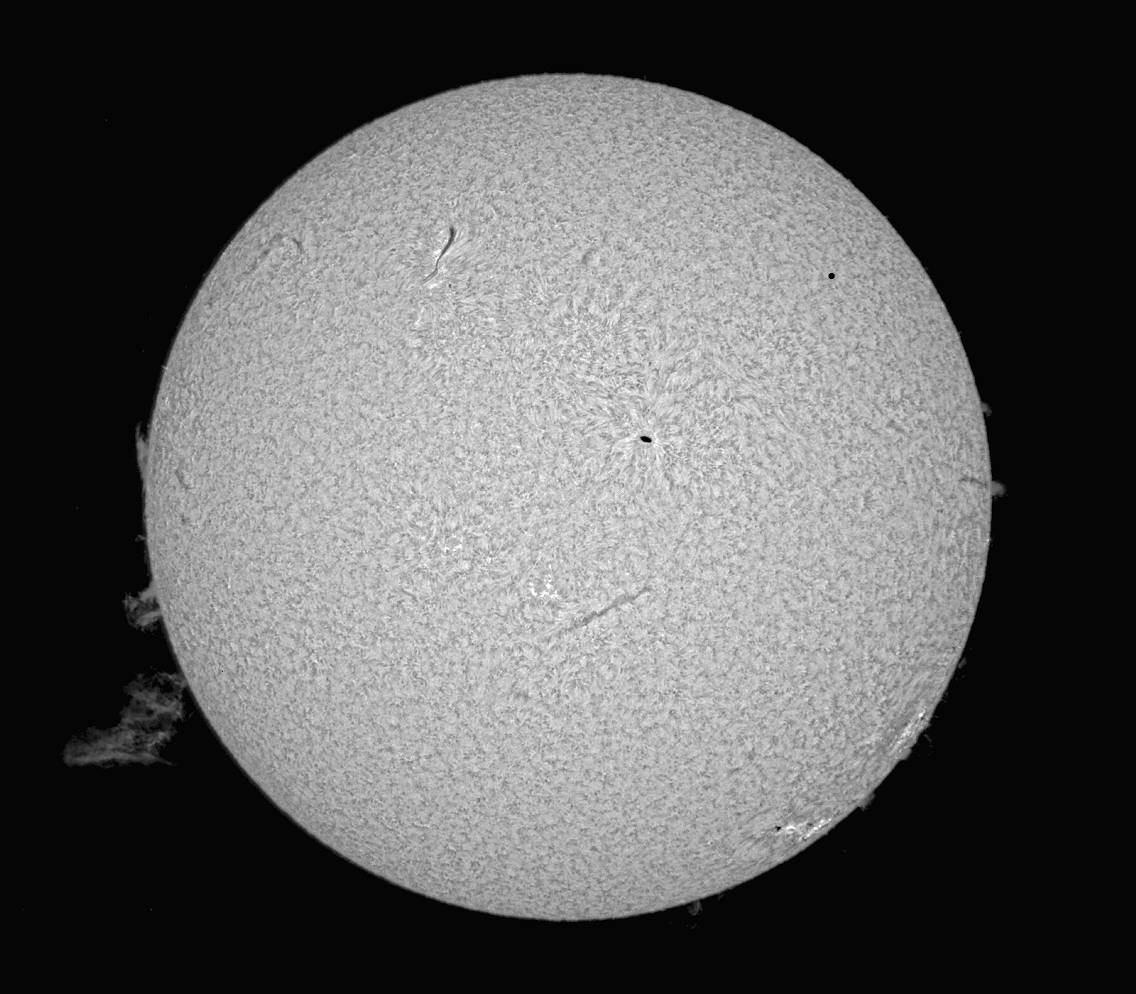
THE TRANSIT OF MERCURY OF MAY 7 2003
|
Images taken from Normandy, France, with a Takahashi FSQ-106 refractor (diaphragmed to 50mm), a Daystar H-alpha filter 0.5Å and a SBIG ST-10XE CCD camera. The following image has been taken at 9:17 UT. Celestrial north is up, Mercury is the small dot on top right, and a huge prominence (height about 250000 km) is also visible. Mercury being situated between the Sun and us, on this image it seems larger than it actually is in comparison with our star; if it was situated at the same distance as the Sun, its disk would appear 2.5 times smaller! |
(click on the image for full size)

| Animation of the last contacts; the real duration is 12 minutes and the movement is accelerated 125 times. Mercury goes past the chromosphere and therefore is visible after the instant of the 4th contact that is given for the photosphere: |

| Animation of the complete solar disk during the transit (reduced size, 7 images in 480x420). Click here (or on the image below) to display the original animation, more spectacular (26 images in 640x560, 4.5 Mo). |
This animation allows to observe many solar phenomenons during
the 5h20mn of the transit:
- the rotation of the solar disk from east to west
- the fading of the large prominence at the end of the transit
- the continuous flow of matter in the dark filaments visible on the disk
- a strong and quick flare in an active group (bottom right)
- an elusive prominence in arch at the limb from the next active group